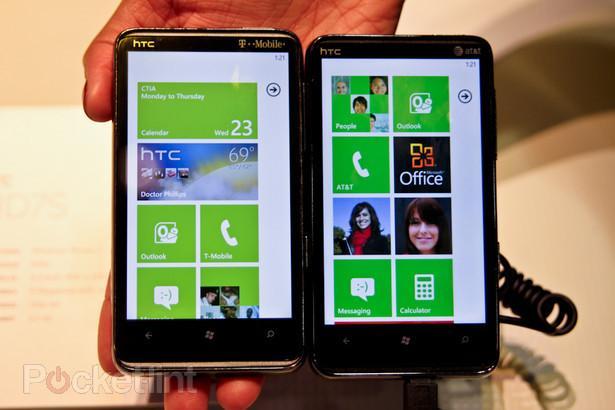
Each cell phone manufacturer has their own idea of what the best smartphone is, and they appropriately fit their devices with what they feel are the best components available. There are a handful of different processor, camera, and storage technologies at their disposal, and every OEM has a different idea of what the “sweet spot” display size is. Regardless, a vast majority of smartphones are beginning to look the same; little is left to differentiate one phone from another. But as smartphones get larger and buttons disappear, one technology constantly finds itself in the limelight: display technology.
Every company has their own weapon of choice. More recently, HTC made the switch to Super LCD displays, Motorola has an affinity for TFT, LG is prepping to harness the power (or lack thereof) of their own NOVA display, Samsung is notorious for their popping AMOLED technology and Apple claims to take the cake with their IPS Retina Display (LED-backlit TFT) tech. As these things go, no display technology is perfect – there are advantages and disadvantages with each type.
I've spent many hours of hands-on time with just about every mobile display type out there, and it's easy to spot the difference if you know what you're looking for. For instance, if you pay close attention to Motorola's more recent displays, they've changed the subpixel layout to a PenTile Matrix pattern with an extra white subpixel. This makes the display much brighter, and it has an edge in recreating whiter parts of pictures, like the shimmer in a picture of a lake. That said, the different subpixel layout makes it noticeably easier to see spot pixelation, especially on saturated colors.
Displays as seen on some of HTC's most recent phones like the Sensation 4G are of the Super LCD type. In short, Super LCD displays are a great middle-of-the-road technology. It typically has great color reproduction, whiter whites and touts less power consumption than competing technologies. The picture above is of the HTC HD7S (right) with a Super LCD and the HD7 (left) with a regular LCD display; it's pretty easy to see the difference in contrast over plain ol' LCD.
Samsung's Super AMOLED Plus displays have easily garnered the greatest attention of 2011, and rightly so. AMOLED displays are known for their second to none contrast, pitch blacks and wide viewing angles. Much like the TFT displays used in Motorola's devices, the Super AMOLED is of the PenTile subpixel layout, though graininess has been less noticeable (it's definitely still there) in my use. Thankfully, Samsung moved away from this and returned to the standard RGB layout in the Super AMOLED Plus display, as seen in the Galaxy S II. This change resulted in more subpixels, thus a brighter and clearer display.
Although the contrast of the Retina Display isn't quite as drastic as Super AMOLED displays, the colors literally pop and the display is extremely bright. In my use, I've had the least trouble with seeing the iPhone 4 display in direct sunlight. Currently, Apple touts the highest resolution and the highest ppi (pixels per inch) of any mobile display. Even among the qHD displays now, the Retina Display still has a higher ppi and resolution. That's soon to change, but this display has been around for well over a year now, so that just goes to show how far ahead the Retina Display was when it was introduced.
Lastly we have LG's NOVA display, which is still a bit of a mystery as we have yet to have any actual hands-on time with it. But just based on the things I've heard from colleagues, LG isn't pulling their punches with NOVA. LG is claiming that this is the brightest mobile display with 700 nits. The NOVA will supposedly debut on the Optimus Black, so keep your eyes peeled for this one, just don't stare directly into it without sunglasses on.
There are many factors that come into play when these manufacturers make their displays, like color reproduction, contrast ratio, resolution, viewing angles, brightness and more, Having the best across-the-board display is impossibly hard to do and narrowing it down to a single favorite display is equally difficult – I need the added brightness for viewing the display in direct sunlight and I'm a huge advocate for high contrast. I will add that Samsung has done a tremendous job at matching the blacks in the display with the black in the bezel to make the boundaries of the display disappear in the face of the phone, which might explain why I've recently become a sucker for Super AMOLED Plus displays.
If it came down to a battle of the displays, which technology would you choose? Pick your favorite in the poll below and let us know why you think it's the best in the comments.
Image via Pocket-lint